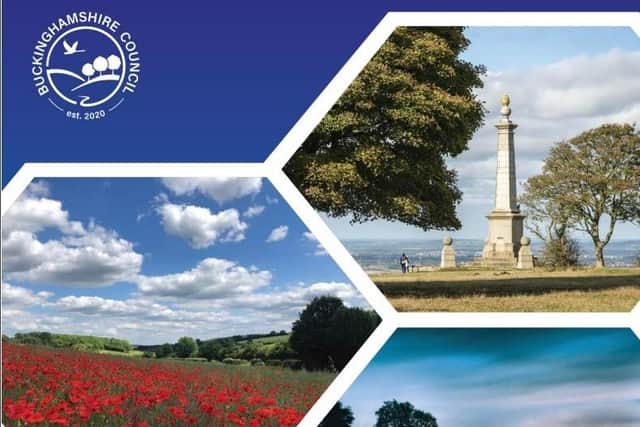Three Bucks chalk streams failing on water pollution directives
and live on Freeview channel 276
A chalk stream that receives treated effluent from a sewage treatment works at Princes Risborough is one of three in Bucks that are failing Water Framework Directive objectives for phosphate, a new report reveals.
Bucks Council is vowing to lobby water companies and the Environment Agency, after cabinet heard a special report on concerns over pollution in the county’s rivers and rare chalk streams.
Advertisement
Advertisement
The Transport, Environment and Climate Change (TECC) Select Committee carried out the rapid review into potential pollution of the watercourses after fears that more discharges by water companies and the impact of HS2 works were potentially polluting the chalk aquifer beneath the Misbourne Valley.


The council does not have responsibility for water quality - this lies with the Environment Agency and the water companies. The cross-party review group gathered evidence from a variety of sources and stakeholders over a four-month period.
Their report, presented to the council’s cabinet yesterday (Tuesday) reveals that the water industry is the single biggest contributor towards poor water quality in the Thames basin.
Five of Buckinghamshire’s chalk streams have sewage treatment works discharging treated effluent into them, and three of these are currently failing Water Framework Directive objectives for phosphate.
Advertisement
Advertisement
They include the River Horsenden, which takes effluent from the sewage treatment works at Princes Risborough, the River Chess (Chesham) and the River Colne (Maple Lodge). Phosphorous is discharged from treated sewage effluent and has a negative impact on river ecology and water quality.
The enquiry also found that Buckinghamshire’s chalk streams are being polluted by surface water that runs off local roads, carrying pollutants directly into watercourses. These pollutants include decomposing plant and animal matter and by-products from vehicles such as hydrocarbons, oil, brake dust, tyre fragments, hydraulic fluids, and antifreeze.
It found that Bucks sits across three geographical areas of the Environment Agency, meaning it can be extremely challenging for even the council to locate the correct contacts within the Environment Agency with whom to raise queries or concerns, and residents need to know who to contact in the event of a water pollution incident.
It also revealed that the Rivers Trust, an umbrella group working to improve water quality and advise landowners, currently has no representation in the Great Ouse area.
Advertisement
Advertisement
Cabinet accepted the report’s recommendations, which include asking Anglian Water and Thames Water to provide annual reports on progress in reducing discharges into the watercourse and improvements to infrastructure in Bucks.
Council leader Martin Tett will also write to the Secretary of State for Environment, Food and Rural Affairs over the council’s concerns with the Environment Agency about lack of engagement, the discharge of its statutory functions and its conduct.
Gareth Williams, cabinet member for climate change and environment, said: “When the government’s own Environmental Audit Committee concluded that every single river in England is contaminated, it was extremely clear to us we needed to understand what that means for Buckinghamshire’s rivers and chalk streams. This has been a vital piece of work and I thank the select committee for their hard work in pulling this detail together.
“It is essential we understand the full situation to lobby groups hard on behalf of our residents to improve the quality of our precious watercourses.”